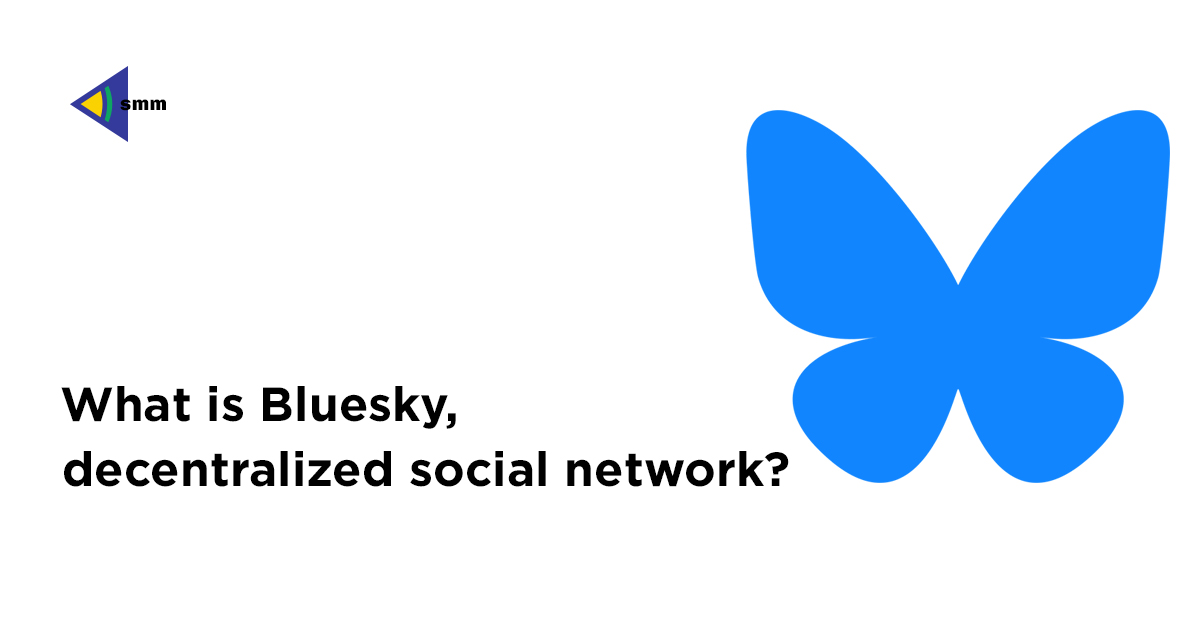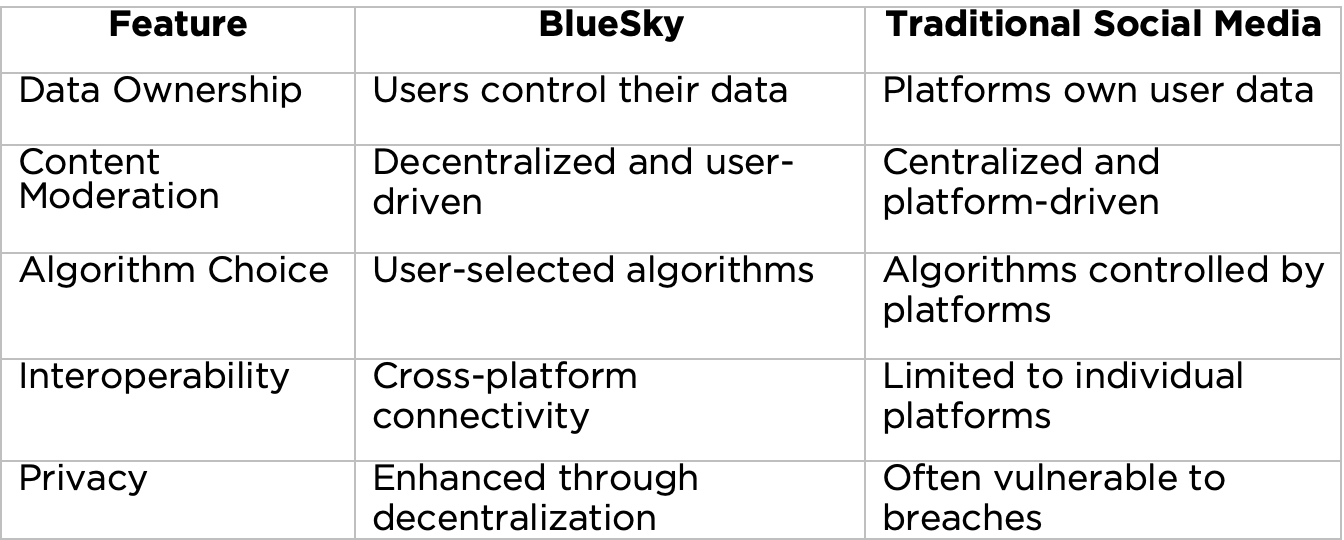
The BlueSky social network is making waves in the digital space, emerging as a revolutionary platform designed to redefine how we interact online. Founded by Jack Dorsey, the former CEO of Twitter, BlueSky aims to tackle some of the most pressing issues facing traditional social media platforms, including centralized control, censorship, and algorithmic bias. In this article, we’ll delve into the details of BlueSky, exploring its mission, features, advantages, and potential to reshape the social media landscape.
Bluesky has quickly risen in popularity since its launch in 2021, amassing an impressive 2 million users by November 2024.
What Is BlueSky?

The main thing you need to know about BlueSky is that it’s a decentralized social media platform aiming to give users greater control over their data, identities, and how they interact online. Unlike traditional social networks like Twitter or Facebook, which are centralized and controlled by a single company, BlueSky operates on the AT Protocol (Authenticated Transfer Protocol). This framework allows:
- User-Owned Identities: You own your profile and data, making it portable across platforms using the same protocol.
- Customizable Algorithms: Users can choose how content is presented in their feeds, avoiding biases or manipulative algorithms.
- Decentralized Moderation: Communities set their own moderation rules, reducing the risk of corporate censorship or unfair content bans.
- Cross-Platform Connectivity: Interoperability with other platforms using the AT Protocol creates a cohesive ecosystem.
BlueSky is designed to tackle issues like privacy, censorship, and algorithmic manipulation, offering a user-first, transparent, and flexible alternative to traditional social media. It represents a significant step toward the future of decentralized online interaction.
By the following link, you can find Reddit feed with discussions about this social network https://www.reddit.com/r/BlueskySocial/
Key Principles of BlueSky Social
- Decentralization: Users control their data and identities, reducing the risk of censorship and data exploitation.
- Interoperability: BlueSky allows users to connect across multiple platforms built on the same protocol.
- Algorithmic Transparency: Users can choose algorithms that prioritize their needs, fostering a personalized and unbiased experience.
- Open Standards: The platform promotes collaboration and innovation through open-source tools and shared protocols.
Bluesky vs. traditional social media

- If we’re talking about interface, the Bluesky is similar to X (formerly Twitter).
- Bluesky’s user interface and functionality resemble Twitter in many ways, including features like timelines, posts (similar to tweets), and user handles.
- This similarity is not surprising, given that Bluesky was initiated as a project under Twitter and spearheaded by its former CEO, Jack Dorsey.
- Posts on Bluesky are short and concise, similar to tweets on Twitter.
- Bluesky adopts the same “follower/following” model as Twitter, rather than relying on friend requests like Facebook.
- Both platforms have a clean, uncluttered interface that prioritizes content and conversation over excessive features.
What about the difference between Bluesky social and Twitter?
- Bluesky allows users to select or customize the algorithms that curate their feeds, giving them control over what they see. Twitter’s algorithm is controlled centrally, with limited customization options.
- Bluesky empowers communities and users to define moderation rules, whereas Twitter’s moderation is centralized.
The platform is committed to fostering a safe and respectful online space, with a dynamic approach to content moderation. Bluesky uses a combination of user reports, automated tools, and human reviewers to handle content concerns, ensuring a balanced and effective moderation process. In general, you have many options when you click on 3 dots to see more under post:

In addition to reporting tools, users have the ability to create and manage block or mute lists. These lists can be tailored individually or developed collaboratively within communities, giving users shared control over the content displayed in their feeds. Custom filtering options further allow users to fine-tune their content preferences up to language choice:

Another key feature is the ability for authors to control who can reply to their posts, offering greater control over interactions. Using the ‘Reply Controls’ setting, users can decide whether replies are open to everyone, limited to followers, or disabled entirely, creating a more personalized and secure posting experience.
After all, Bluesky is a bold experiment in reimagining how we connect online. Bluesky is worth exploring for anyone seeking a more transparent, customizable, and privacy-focused social media experience. As it continues to evolve, it may become the gold standard for the next generation of social networking.








Comments 0